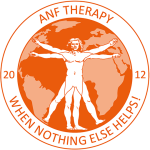Polymyalgia rheumatica vs. fibromyalgia: Which is worse?
Polymyalgia vs fibromyalgia; which is worse?
Every individual experiences different symptoms with these conditions, making it difficult to determine which is worse. However, fibromyalgia is often considered more challenging than polymyalgia due to its persistent symptoms, including widespread pain and fatigue, which can be harder to manage effectively.

Polymyalgia rheumatica vs. fibromyalgia: What's the difference?
Although both conditions share similarities, PMR and fibromyalgia are two different conditions with different pathophysiology. Let’s have a look at some key differences:
Nature of the condition
Polymyalgia rheumatica (PMR) is an autoimmune condition in which the immune system mistakenly attacks its own healthy tissues and treats them as foreign invaders like bacteria or viruses. As a result, it causes inflammation and pain in joints and surrounding tissues.
On the other hand, fibromyalgia is neither an autoimmune disorder nor is considered inflammatory. Instead, it involves the central nervous system, where there is a disruption in pain processing signals, leading to increased sensitivity to pain.
Age of onset
PMR usually affects people over the age of 65, with most cases occurring in people between 70 and 80 years old. In contrast, fibromyalgia can occur at any age but is most common in women aged 20 to 50, especially during their childbearing age.
Causes
The exact cause of both PMR and fibromyalgia is unknown. However, PMR is believed to be an autoimmune reaction that could occur due to genetic or environmental factors.
While fibromyalgia may also be genetic, it is thought to result from central sensitisation, where the brain amplifies pain signals due to altered neural pathways. Stress, infections, or physical trauma may trigger fibromyalgia.
Inflammation
Location and time of pain
In PMR, people experience pain in specific areas, including the neck, shoulders, upper arms, hips, thighs, buttocks, and sometimes elbows, wrists, and knees. The pain is usually worse in the morning.
Contrary to this, fibromyalgia has widespread pain that affects all parts of the body and often worsens at night.

Symptoms
PMR primarily causes localised causes pain and stiffness in the shoulders, neck, and hips. It often comes with other symptoms like:
- Fatigue
- Malaise
- Weight loss
- Joint swelling
- Loss of appetite
- Low-grade fever
- Decreased movement in the neck and hips
Fibromyalgia, on the other hand, causes widespread pain throughout the body. Its symptoms include:
- Tiredness
- Trouble sleeping
- Fibro fog, which affects memory and concentration
- Irritable bowel syndrome (IBS)
- Migraines or headaches
- Sensitivities to touch, light, or noise
The symptoms of PMR improve as the day progresses. However, fibromyalgia symptoms can change throughout the day and vary from day to day. People with fibromyalgia often experience “flares,” where symptoms worsen for a few days or weeks before going back to normal.
Onset of symptoms
PMR typically has a rapid onset, with symptoms appearing quickly, often within a few days to weeks. On the other hand, fibromyalgia can develop either rapidly or gradually, with some people experiencing worsening symptoms over time.
Duration
PMR usually improves within one to two years with proper treatment, though some individuals may need ongoing management to prevent relapses.
In contrast, fibromyalgia is a chronic condition that often lasts for years or even a lifetime, with symptoms that can vary in intensity over time.
Associated conditions
About 15% of people with PMR have another associated condition called giant cell arteritis. This condition causes inflammation in the large blood vessels of the head, neck, and arms, leading to blood blockage. This results in complications such as vision loss.
On the other hand, fibromyalgia is usually associated with conditions like osteoarthritis, ankylosing spondylitis (swelling and pain in the pine), and rheumatoid arthritis.
How to treat fibromyalgia and polymyalgia?
ANF Therapy®️ is the newest treatment for polymyalgia and fibromyalgia. It uses different types of ANF Devices, including anti-inflammatory, antioxidant, nitric oxide, blood flow and mental calm devices. These devices are applied to certain areas of your body that aim to restore your weakened neurological frequencies, remove inflammation, promote natural healing, provide muscle strength, detox your body and promote blood flow towards the affected areas of your body.
Outcomes can vary from person to person depending on the nature and severity of the disease. However, according to Dr. Mikel H-G Hoff most of the patients feel swift relief in their symptoms soon after the first session.
Start your journey with ANF Therapy®️:
If you have polymyalgia or fibromyalgia that is getting worse over time, ANF Therapy®️ might be the best solution for you. It is the newest treatment for managing injuries and inflammatory conditions. If you or your family member are suffering from fibromyalgia or polymyalgia, consult an ANF Practitioner or find an ANF Therapist at https://www.anftherapy.com/find-clinic/ to start your treatment with ANF Therapy®️ today!
If you’re a healthcare practitioner and want to enhance your clinical skills with frequency medicine, learn more about the ANF Therapy®️ and ANF Clinical education program by visiting www.anfacademy.com.








